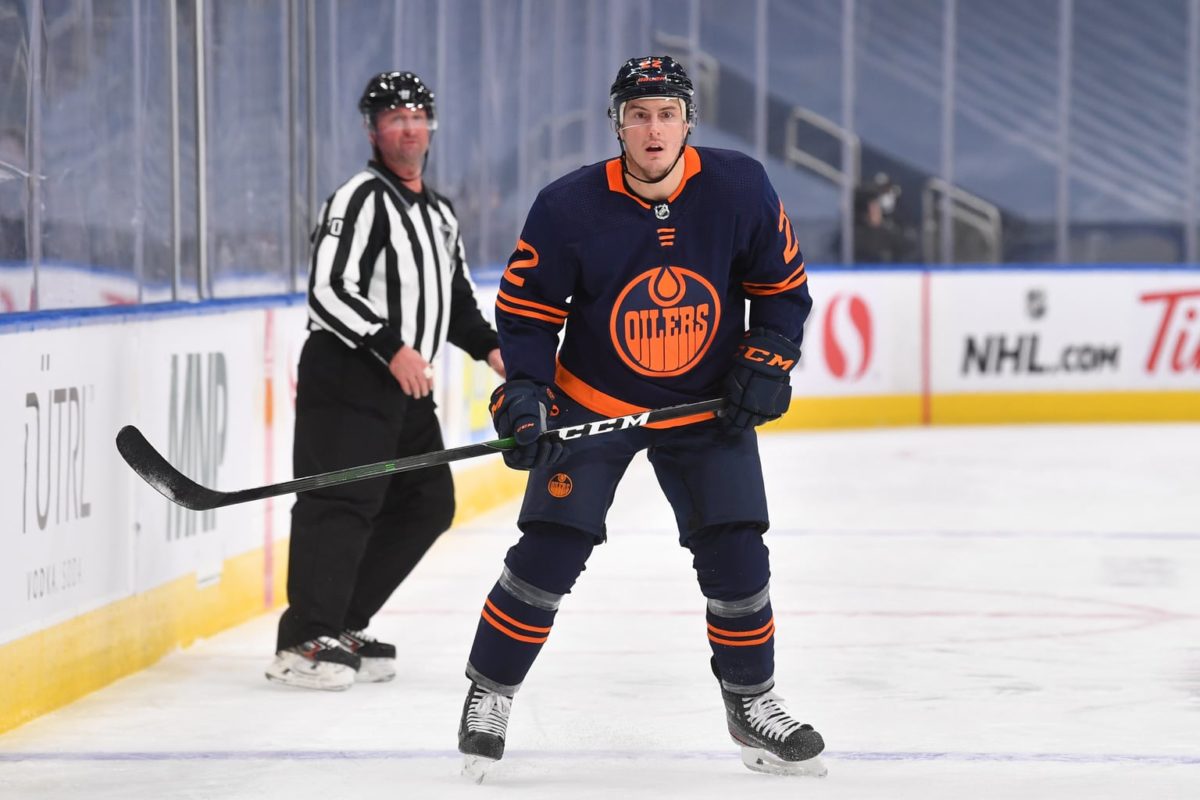Now that the trade deadline has passed, it was without a doubt a sellers’ market, due to the steep prices paid to acquire defensemen. The Montreal Canadiens’ trade of Ben Chiarot to the Florida Panthers set the benchmark for the price of blue liners — the Canadiens received first-and-fourth-round picks, along with prospect Tyler Smilanic.
Taking a look at other trades around the league, Travis Hamonic, who averages 18:22 of ice time per game, fetched a third-round pick from the Ottawa Senators. Travis Dermott (14:22 per game) also was traded for a third-round pick, and Jeremy Lauzon (17:51 per game) was obtained by the Nashville Predators for a second-round pick. The Edmonton Oilers also made a splash and acquired Brett Kulak (17:58 per game), with Montreal retaining 50 percent of his salary, for William Lagesson, a conditional second-round pick, and a seventh-round pick.
This brings us to Oilers’ defenseman Tyson Barrie. He has 30 points on the season, averages 19:03 of ice time per game, and comes with a price tag of $4.5 million AAV for the next two seasons. If Hamonic and Dermott returned third-round picks, you’d have to think Barrie would have netted a bigger return?
Because the Oilers didn’t bring in a right-shot defenseman at the deadline (they were rumoured to be interested in Justin Braun), I understand the reasoning to keep Barrie until the end of the season. But considering the high price to acquire defensemen at the deadline, the Oilers should maximize value. They could do this by moving Barrie in the offseason for the highest draft pick possible, while also freeing up cap space.
Bouchard Makes Barrie Expendable
I previously wrote that signing Barrie this past offseason seemed like the “Plan B” to losing Adam Larsson the Seattle Kraken. It made sense from the Oilers’ perspective, as he was coming off a 48-point season where he led all NHL defensemen in points.

Many felt that Evan Bouchard should’ve automatically been gifted first unit power-play duties to replace Barrie, however, it wouldn’t have been a wise decision to put that type of pressure on a player who had 21 games under his belt at the time. Now that we’ve seen that the 22-year-old Bouchard is fully capable of producing points while playing fetch with Connor McDavid on the first-unit power play, this makes Barrie and his $4.5 million AAV expendable. He and Bouchard have similar skillsets, and the Oilers should replace him with some muscle on the blue line.
Barrie is an offensive defenseman with 13 points in his last 17 games, and has deficiencies in the actual defending part of the job description. Even so, he does have value, and his offensive skill would surely help any team on the man advantage.
Without making any moves, the Oilers currently have $7.8 million in cap space for next season. They need to sign a goaltender, and Jesse Puljujarvi and Kailer Yamamoto both need new contracts. That said, Yamamoto’s value continues to increase — especially after scoring six goals in his last seven games — and his price tag becomes higher each time he buries one. Also, Evander Kane is on a 46-goal pace in an 82-game season, and he’s fitting in well with his new team. He’s physical, and he’s bringing his teammates into the fight with him. It’s going to be a tough task trying to re-sign the power forward, but it’s something they should give an honest pitch at.
Without a doubt, the Oilers need to free up cap space. If I’m general manager Ken Holland, I’m calling teams with the worst power-play percentages, like the Canadiens and the Seattle Kraken, and I’m pitching Barrie and seeing if they need a power-play quarterback. Also, playoff-bound teams who get knocked out early might realize they need more offensive puck movers from the back end, and the Oilers’ defender might be an attractive option for them.
Who Should the Oilers Replace Him With?
If the Oilers are able to offload Barrie’s contract, they should allocate the $4.5 million AAV in cap space to other areas of need, but they’ll still need to replace him with another right-shot defenseman. Heading into next season they’ll have Cody Ceci on the right side — who can play top pair — and Bouchard, who will be another year older and wiser, and should be able to handle second-pairing minutes.
Taking a look at unrestricted free agents this upcoming summer, there are several NHL defencemen worth taking a shot at for the right side, third-pairing role. I’ve previously mentioned former Edmonton Oil King, Mark Pysyk as a low-cost solution on defence. He’s currently making $900,000, and could be had for roughly the same cap hit. He makes a good first pass, averages 18:11 minutes a game, and can skate the puck out of danger.
Related: Shooting Down 3 Myths Holland and Oilers Were a Trade Deadline Loser
An intriguing defenseman to acquire would be the Calgary Flames’ Erik Gudbranson, if he’s open to signing with his current Alberta rival. The 6-foot-5 physical defender averages 18:13 minutes a game, is third on the team in blocked shots (76), is fifth on the Flames in hits (123) and would bring a physical dimension on the back end that the Oilers severely lack. He has five goals and 10 assists, and has a plus-14 rating. He currently makes just under $2 million AAV, and if Edmonton can bring him in around the same price, he would make the Oilers harder to play against in their zone — something that’s been missing with Larsson’s departure.
Considering the steep prices NHL GMs were paying for mid to bottom-pairing blue liners at the deadline, it’s something the Oilers should take advantage of. The prices likely won’t be as high, but take the highest draft pick for Barrie in the offseason and cut ties with his $4.5 million AAV.
